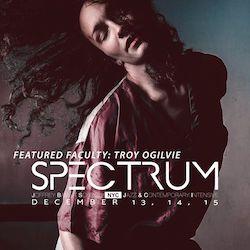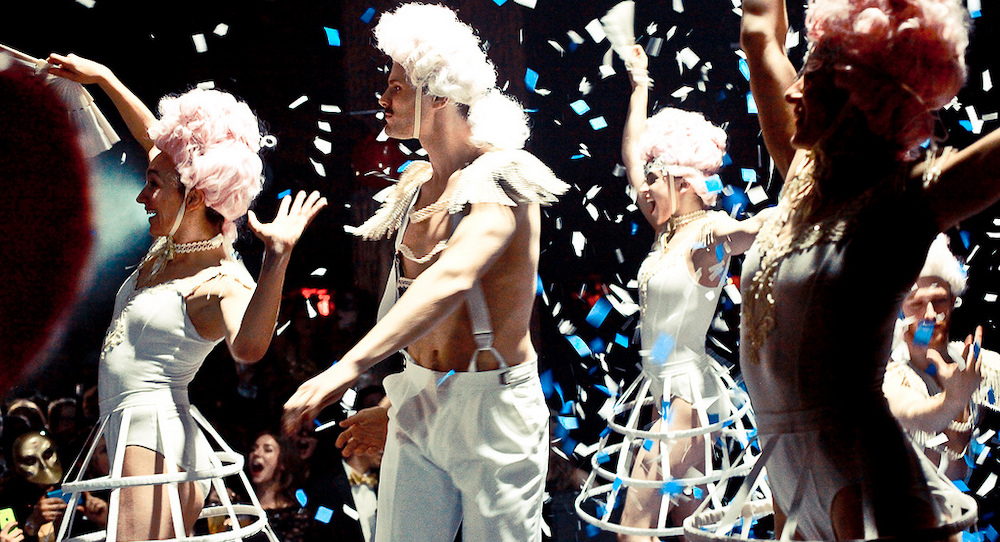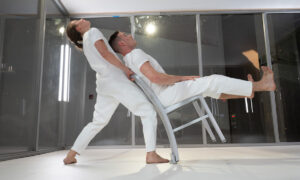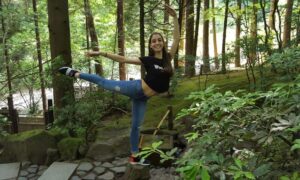Dance Informa offers you the next installment in our series on alternative dance gigs! This month, we’re talking about immersive dance, and the various ways you are perfect for the job.
We sat down with Troy Ogilvie, who was formerly a dancer with the New York-based immersive show, Sleep No More, and is currently performing, choreographing, teaching and producing immersive style dance.

How would you define immersive dance?
“I feel like it’s from a place of wanting to move people. It’s kind of what art was always supposed to do. Maybe we got to a place where audiences needed more in order to feel, like being inside an environment that they can move around, that’s been created for them. We always talk about the difference between immersion and interaction. An interactive experience is something where what the audience does will affect the performance. And my understanding of immersive, what makes it different from interactive, is it’s something where you go and you are immersed in a world, where you experience the story but can’t change it.”
There seem to be more and more opportunities like that out there now.
“Yeah, even just at Sleep No More, which I was in for a year-and-a-half. It’s been going for eight or nine years and is becoming more of a reliable job with multiple casts.”
A lot of the cast members are concert dancers. It’s cool to see them transplanted into a new environment like that.
“Yes, Maxine Doyle (Sleep No More choreographer) has been going to Springboard Danse Montreal and creates on both dance theater and contemporary companies, where she works with a lot of conservatory trained dancers. I’m excited to see what happens when those dancers leave. They have a different tool set now, and I’m curious to see the kind of work they make after being in an immersive environment.”

The last time I saw you, you were in costume leading a crowd at Sleep No More’s Mayfair party. What brings you back to do character roles at Sleep No More?
“When I was in the show, I also performed in the parties. Conor Doyle was the director of the parties, and it was his vision. But you know how artists work, everybody makes material and then the director crafts it to what the story needs. So I did that for awhile, and then I became his assistant for the parties after I left the show. I started going to production meetings and seeing what it takes to put on events like that. I was a director on the creative team with Sophie Bortolussi for the past five years. Then my schedule got a bit busy, and now Emily Terndrup, Lily Ockwell and Austin Goodwin are running them, which is awesome. Every once in awhile they’ll call and be like, ‘Hey! Can you come and do this thing?’ And it’s so fun, I know that world so well, and I love it. And I love the version of it that we create for the parties. Where you take this show that people are super interested in, and you use that as a sort of springboard into another entity. They’re little parallel universes of the main story, branching off. And it’s fun, it’s a party, it’s kind of throwaway, but it’s also a chance to do things that are super creative.”
How is your experience as a dancer an asset to you in immersive work?
“I think everything that makes a spectacular performer, all of those tools bleed over into acting, and dance, and being a teacher, and being a cult leader, and being a charming guest at a party. They’re all the same skills of charm and mystery and leadership and fantasy. I think all those things are human qualities that get amplified in performance. That’s how I feel about it. And I think the way dancers are currently trained often asks to separate those attributes from the physical body. I find I actually have to untrain a lot of that, and bring myself back to my body and not abstract it into ‘Oh, I’m just a dancer.'”
Untrain the separation between technique and acting?
“Yeah, or untrain the distancing of yourself from how you actually feel about things. I think that any time we have the opportunity to be our full selves, we should. And in an immersive atmosphere, that’s definitely what it takes. That’s when you’re at your best.”
Do you have any recommendations for dancers interested in immersion work?

“I think immersive theater is still very much finding itself; it’s still trying to figure out what it is. So I think it’s about being interested in what you’re interested in. There’s a lot to figure out. Like in terms of the actual stories that we tell, and why we tell them at a certain time, and how. Dancers are so acquiescent. They so want to be what you want. But I think we can afford a little more tension. Take classes. Take acting, take singing, and look at the stories you’re interested in telling. Play with character. See what you like, and why.”
I think that’s good advice for the dance world in general, is just be interested in what you’re interested in.
“Please! Please. Choreographers want to work with people, not paint. There’s a reason that they’ve chosen people as their material.”
You can’t just be a blank canvas anymore; you have to present yourself as a whole person.
“Yeah! You have to! Otherwise computers are going to take our jobs.”
Follow what Troy Ogilvie is up to in immersive work through her Instagram @troyanosaurus or on her website. See her perform live at Triskelion in Never Before Never Again on January 17-18. Take her class at Peridance on Tuesdays, or at the Joffrey Spectrum Winter Workshop and Moving Forward Dallas Winter Intensive.
By Holly LaRoche of Dance Informa.















